Related Research Articles

The history of Tasmania begins at the end of the most recent ice age when it is believed that the island was joined to the Australian mainland. Little is known of the human history of the island until the British colonisation in the 19th century.

TheMercury is a daily newspaper, published in Hobart, Tasmania, Australia, by Davies Brothers Pty Ltd, part of News Corp Australia and News Corp. The weekend issues of the paper are called Mercury on Saturday and Sunday Tasmanian. The current editor of TheMercury is Jenna Cairney.
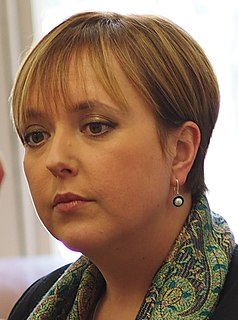
Larissa Tahireh "Lara" Giddings is a former Australian politician who was the 44th Premier of Tasmania from 24 January 2011 until 31 March 2014, the first woman to hold the position. Born in Goroka, Papua New Guinea, she was a Labor Party member of the Tasmanian House of Assembly seat of Franklin from 2002 to 2018, and was the party's leader during her period as premier, replaced by Bryan Green after her government's defeat at the 2014 state election. Giddings came from the Labor Left faction.
John Lee Archer was the Civil Engineer and Colonial Architect in Van Diemen's Land, serving from 1827 to 1838. During his tenure, Archer was responsible for all Tasmanian government buildings including those for penal and military purposes.
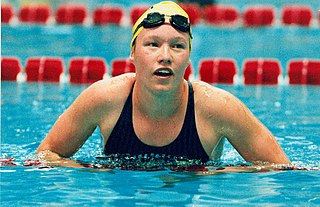
Melissa Paula Carlton, OAM is a South African-born Australian swimmer. Born with no right leg and short fingers on her left hand, she won gold, silver and bronze medals for Australia at both the 1996 Atlanta and 2000 Sydney Paralympics.

Lily Poulett-Harris was an Australian sportswoman and educationalist, notable for being the founder and captain of the first Women's cricket team in Australia. Poulett-Harris continued to play until forced to retire due to ill health from the tuberculosis that was eventually to claim her life.
Kevin Borland was an Australian post-war Architect. His career saw works evolve from an International Modernist stance into a Regionalist aesthetic for which he became most recognized. Much of his significant works were composed of raw materials and considered ‘Brutalist’ typifying Borland’s renowned motto ‘architecture is not for the faint-hearted’. Borland died in 2000 leaving a legacy of work throughout Victoria, New South Wales and Tasmania.

Sir John George Davies, generally known as (Sir) George Davies, was a Tasmanian politician, newspaper proprietor and first-class cricketer.

Boyer Oval is the home headquarters of the New Norfolk District Football Club and the Molesworth Cricket Club. The ground is a former Tasmanian Football League venue, being the host venue of 825 official TFL matches for New Norfolk in TFL football from 1947 to 1999 and from 2000 it became a venue for SFL football when New Norfolk were demoted from the Statewide League. It is located on First Avenue and has a back entrance on Back River Road at New Norfolk, 38 kilometres north-west of the Hobart CBD.
Dirk Bolt was a Dutch-born architect who is best known for his post-Second World War Australian modernist architecture and his later career as an academic and consultant that applied sustainable, equitable and humane principles to town planning.

Henry Hunter (1832–1892) was a prominent architect and civil servant in Tasmania and Queensland, Australia. He is best known for his work on churches. During his life was also at various times a state magistrate of Tasmania, a member of the Tasmanian State Board of Education, the Hobart Board of Health, a Commissioner for the New Norfolk Insane Asylum and President of the Queensland Institute of Architects.
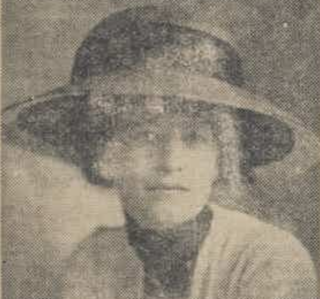
Florence Aline Rodway was an Australian artist best known for her portraits. Born in the Tasmanian city of Hobart, she was the second of six children to Leonard Rodway and Louisa Susan, née Phillips. She studied painting at the Hobart Technical College ; after two years her work was sent to London, and she was awarded a three-year scholarship to study painting at the Royal Academy of Arts, London. She is best known for having painted portraits of notable figures in Australian history, including Dame Nellie Melba, William Bridges, J. F. Archibald and Henry Lawson.
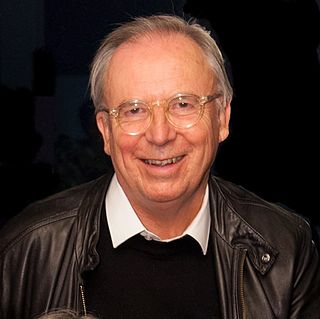
Robert William Morris-Nunn is an Australian architect.

Corinne Louise Hall is an Australian cricketer who plays as a right-handed batter and occasional right-arm off break bowler for Tasmanian Tigers in the Women's National Cricket League (WNCL) and Sydney Thunder in the Women's Big Bash League (WBBL). She has also played for English county sides Berkshire and Devon, and the New Zealand team Canterbury Magicians.
Briony Kidd is an Australian director based in Hobart, Tasmania. She has a Bachelor of Film and TV from the Victorian College of the Arts, Melbourne.
Claire Chandler is an Australian politician who was elected as a Senator for Tasmania at the 2019 Australian federal election. She is a member of the Liberal Party.
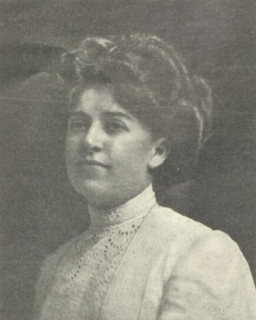
Mildred Esther Lovett was a noted figure in the early 20th century Tasmanian and Australian art scene, known as a teacher and as an artist.

Gerard Kerry Reinmuth is an Australian architect. He is a director of architectural practice TERROIR, which has been featured in a number of international exhibitions and publications the Venice Biennale, AV Monographs’ 20 International Emerging Architects, Phaidon’s 10×10/3 and Atlas of 21st Century Architecture, Australian Financial Review (AFR), TEDXSydney, AV Monographs’ 20 International Emerging Architects, Phaidon’s 10×10/3 and Atlas of 21st Century Architecture. Most recently he was selected to be a judge at the 2020 World Architecture Festival to be held in Lisbon.
Dorothy Kate Stoner was an Australian artist and teacher. She was known for her pastels and modernistic paintings.
Violet Emma Vimpany was an Australian painter and etcher, and in later life also a master stonemason. She was an active member of, and regular exhibitor with, the Art Society of Tasmania. Her work is held in the permanent collection of the Tasmanian Museum and Art Gallery.
References
- ↑ "Women Architects! Why Not!". The Mercury. Hobart. 8 March 1945. p. 9. Retrieved 15 May 2015.
- 1 2 "New Norfolk Girl Tasmania's First Woman Architect". The Mercury. Hobart. 20 January 1944. p. 7. Retrieved 15 May 2015.